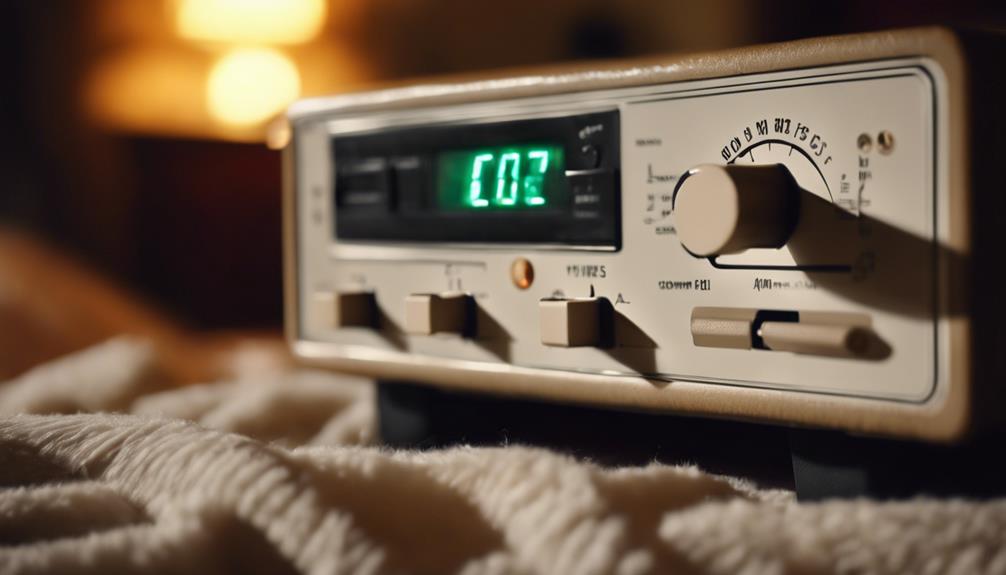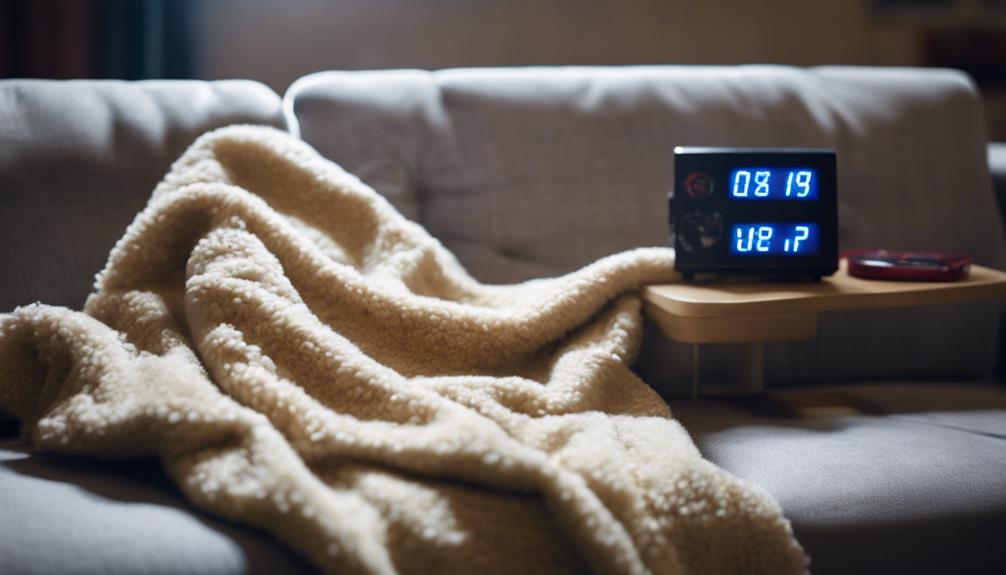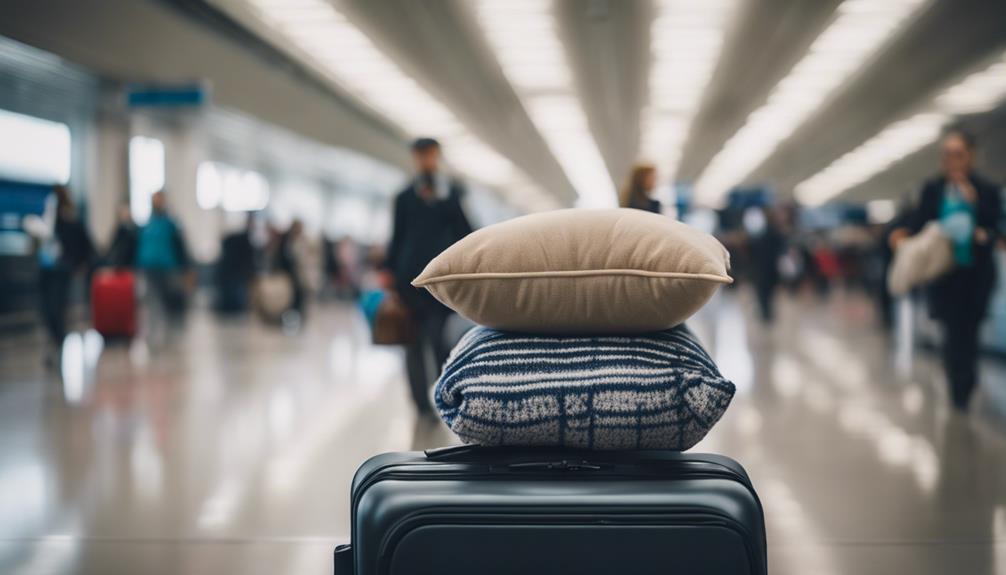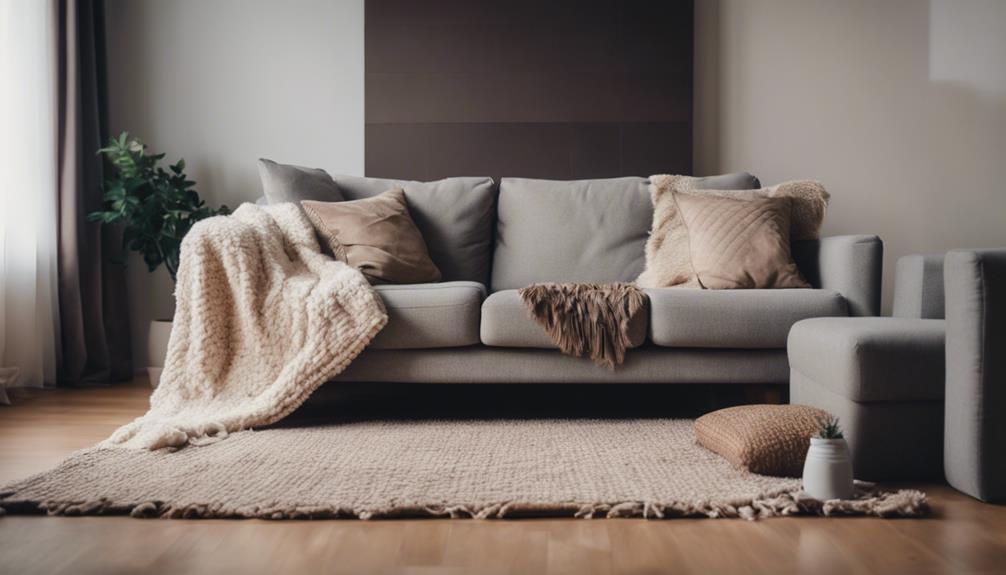Electric throw blankets typically use 60-100 watts, with dual blankets potentially consuming up to 200 watts. Keeping track of wattage helps improve energy efficiency. Factors such as size and heat settings play a role in how much energy is used. Lower wattage options are crucial for efficiency, while larger blankets may require more watts. The material of the blanket also affects how well heat is retained. Making adjustments to how the blankets are used can help maximize efficiency. In very cold climates, higher wattage options are recommended. Understanding wattage is key to effectively managing energy consumption. Choosing the right wattage level can enhance comfort and sustainability. Take wattage into consideration when selecting an electric blanket. Having detailed information on usage and comparisons is important for making informed decisions.
Key Takeaways
- Electric throw blankets typically use 60-100 watts of power.
- Dual blankets can consume up to 200 watts.
- Lower wattage options are more energy-efficient.
- Monitoring wattage helps reduce electricity consumption.
- Adjusting settings optimizes energy efficiency.
Electric Throw Blanket Wattage Overview
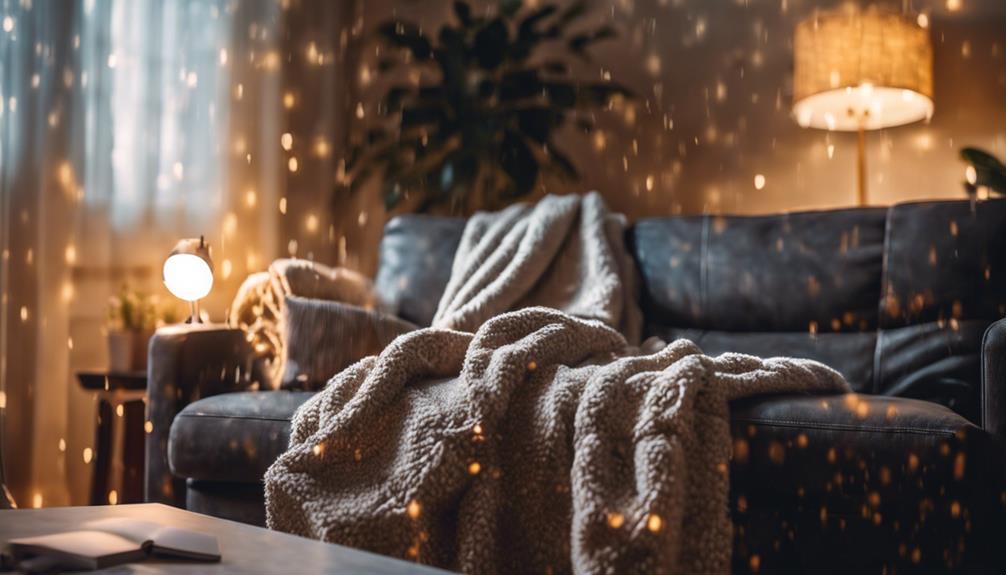
When using electric throw blankets, it's important to be mindful of the wattage they consume to effectively manage energy usage. Electric throw blankets typically use around 60-100 watts of power, with dual blankets potentially consuming up to 200 watts. The wattage can vary depending on the size and heating capacity of the blanket. Opting for lower wattage options can be more energy-efficient, helping to reduce electricity consumption and lower energy bills.
Monitoring the wattage of electric throw blankets is vital in ensuring efficient energy usage. By keeping an eye on the amount of power the blanket is consuming, individuals can make informed decisions about how long to use the blanket and at what temperature setting. This level of monitoring enables users to adjust their usage patterns to optimize energy efficiency without compromising on comfort. Understanding the electricity consumption of electric throw blankets allows us to make conscious choices that benefit both the environment and our wallets.
Factors Influencing Wattage Consumption
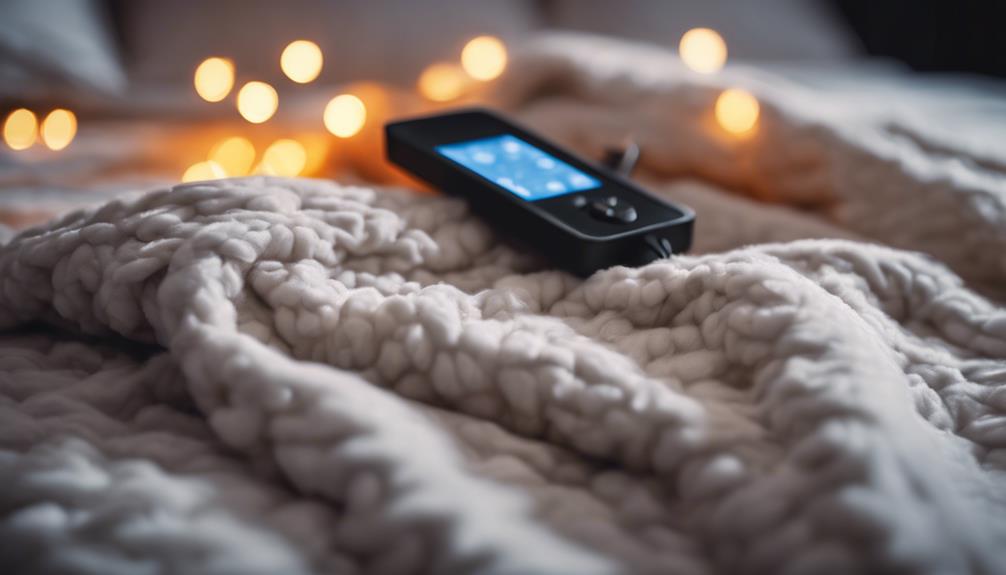
When considering wattage consumption of an electric throw blanket, factors like the size of the blanket, the chosen heating settings, and the efficiency of the material play important roles.
Blankets of varying sizes impact how much electricity is used to generate warmth, with larger blankets often requiring more watts.
Adjusting the heating settings can also greatly influence the wattage consumption, as higher settings typically demand more power.
Additionally, the efficiency of the blanket's material can affect how effectively it retains and disperses heat, influencing the overall wattage needed for best comfort.
Blanket Size Impact
The wattage consumption of an electric throw blanket is greatly influenced by its size, with larger blankets like queen or king size potentially using up to 200 watts. When considering an electric throw blanket, it's essential to factor in the size as it directly impacts energy consumption.
Here are some insights to keep in mind:
- Queen or king size blankets can consume up to 200 watts.
- Single size blankets typically use around 60 watts.
- Dual heating blankets generally consume about 100 watts.
- Wattage varies based on the size and type of the electric throw blanket.
Heating Settings Variation
Understanding how different heating settings impact wattage consumption is crucial when using an electric throw blanket. Lower heat settings, typically around 50-100 watts, offer energy-efficient warmth.
Medium settings, using about 100-150 watts, provide moderate heating. For those seeking significant warmth, the high setting consumes approximately 150-200 watts.
Please be aware that the actual wattage consumption can vary based on the specific brand and model of the electric throw blanket.
By selecting the appropriate heating setting based on your comfort needs, you can optimize energy usage while staying cozy.
Whether you prefer a gentle warmth, moderate heat, or a toasty environment, understanding the wattage consumption at each setting helps in making an informed choice for a comfortable and energy-efficient experience.
Material Efficiency
How can the material of an electric throw blanket influence its wattage consumption?
The type of material used in an electric throw blanket plays a significant role in determining its energy efficiency and wattage usage. Here are some key points to take into account:
- Materials like fleece or microplush generally require lower wattage for heating compared to heavier materials like Sherpa.
- Electric throw blankets equipped with advanced heating elements and technologies tend to be more energy-efficient, consuming less wattage while still providing excellent warmth.
- Energy-efficient electric throw blankets typically operate within a range of 100-150 watts to maintain a comfortable temperature.
- Choosing a high-quality and well-insulated electric throw blanket can help maximize material efficiency and minimize unnecessary wattage consumption for cost-effective heating.
Understanding Electricity Usage of Throw Blankets

Regularly monitoring the wattage consumption of your electric throw blanket can assist in efficient energy management and cost control. An electric blanket consumes approximately 50-100 watts on low settings, providing a gentle warmth. If you opt for a medium setting to increase coziness, the wattage may rise to around 100-150 watts.
For those seeking significant heat on high settings, the electric throw blanket can use approximately 150-200 watts. It's worth noting that the actual wattage consumption can vary depending on the specific brand and model of the electric blanket.
Calculating Energy Cost for Electric Throw Blanket
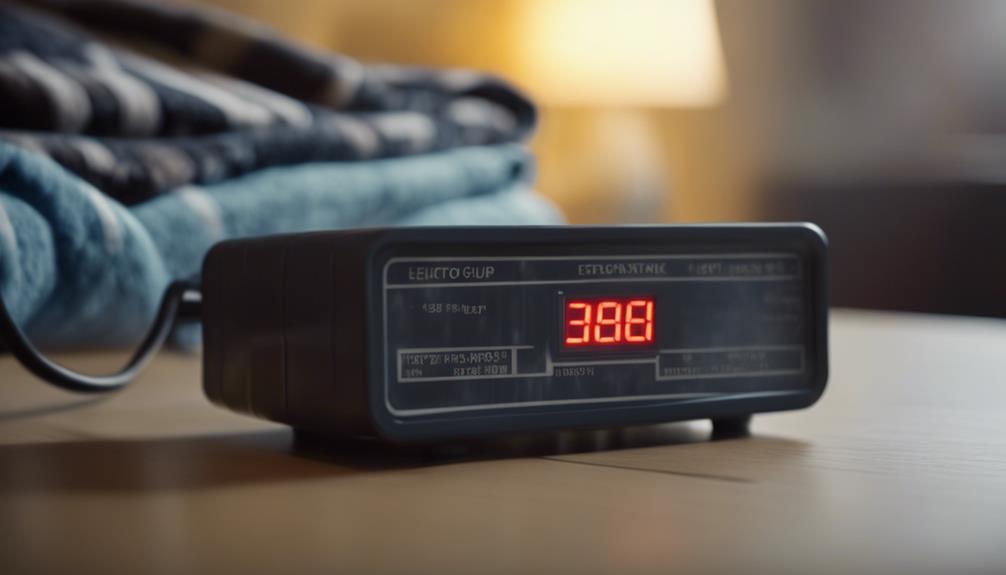
When calculating the energy cost for an electric throw blanket, it's important to take into account the wattage it consumes. The wattage typically ranges from 100 to 150 watts. By multiplying this wattage by the electricity rate, one can estimate the cost of usage per hour accurately.
Comparing the efficiency of different settings and utilizing energy-saving features like timers can further help manage electricity expenses.
Energy Usage Calculation
To estimate the energy cost of using an electric throw blanket, one can calculate the total wattage consumption based on the selected heat setting. When considering the electricity usage for an electric throw blanket, it's important to understand the power consumption levels associated with different heat settings.
- Low settings typically consume around 50-100 watts.
- Medium settings may use approximately 100-150 watts.
- High settings can consume around 150-200 watts for best warmth.
- Actual wattage usage may vary based on the specific brand and model of the electric throw blanket.
Monitoring and adjusting settings can help manage energy consumption effectively, ensuring both comfort and efficiency.
Cost per Hour
In understanding the cost implications of operating an electric throw blanket, we must consider the wattage usage and electricity rates per hour. An electric blanket typically uses 100-150 watts of power per hour, translating to an average cost of around 2.1 to 3.15 cents per hour.
By multiplying the wattage by the electricity rate, one can estimate the hourly cost of using the electric blanket. Monitoring usage habits and adjusting settings can help manage energy expenses effectively.
It's important to comprehend the wattage of the electric blanket to make accurate calculations and budget considerations. Being mindful of these cost factors can assist in making informed decisions regarding the usage of the electric blanket.
Efficiency Comparison
Let's evaluate the energy efficiency of different electric throw blankets by calculating their energy costs. When examining efficiency, it's crucial to take into account energy consumption and cost-effectiveness.
Some key factors to keep in mind are:
- Power Consumption: Electric throw blankets typically consume 100 to 150 watts of power, impacting overall energy usage.
- Usage Control: Effective usage, such as limiting operation to 6 hours nightly, can help reduce energy consumption and costs.
- Adjustable Regulators: Models with adjustable regulators offer personalized usage, potentially resulting in cost savings over time.
- Cost Consideration: The hourly cost of running an electric throw blanket is approximately 0.02145 euros, influencing the overall cost-effectiveness of different models.
Optimal Wattage for Efficient Heating
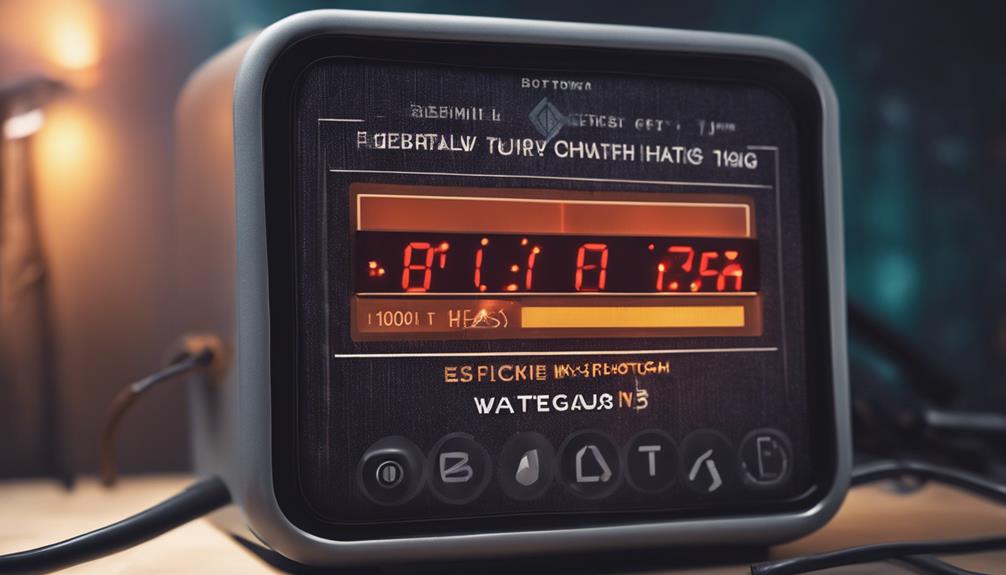
Selecting the appropriate wattage level is vital for ensuring efficient heating with an electric throw blanket. Electric throw blankets typically use around 100 to 150 watts of power for peak performance. Lower wattage settings can effectively maintain warmth in smaller spaces, while higher wattage options, about 150 watts or more, are suitable for extreme cold conditions requiring increased heat output.
Monitoring wattage usage is essential to manage energy consumption efficiently when using an electric throw blanket. By choosing the right wattage level based on personal heating preferences and room size, you can ensure that your electric throw blanket operates at its best while minimizing energy consumption. This thoughtful selection process not only enhances comfort but also contributes to a more sustainable approach to heating.
Wattage Comparison With Other Heating Devices
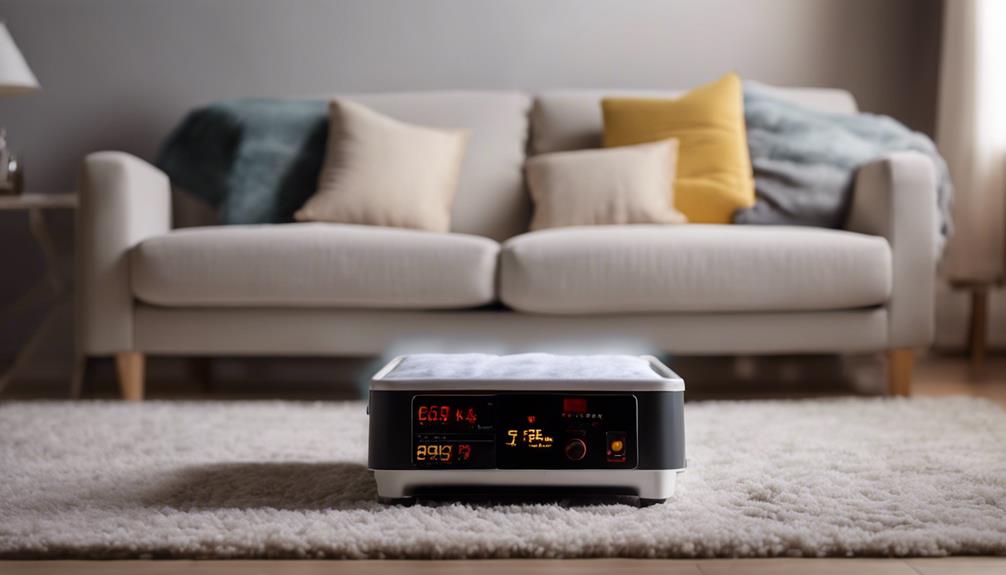
When comparing wattage between electric throw blankets and space heaters, the energy efficiency of electric throw blankets becomes evident due to their lower power consumption. Electric throw blankets typically use around 100-150 watts, whereas a space heater can consume 1500 watts or more, highlighting the significant difference in energy consumption. Choosing an electric throw blanket with lower wattage not only provides sufficient warmth but also helps in saving on electricity costs. These blankets are designed for localized heating, ensuring personal comfort without the need for high wattage consumption. By opting for an electric throw blanket over a space heater, individuals can enjoy warmth with significantly lower power usage.
- Electric throw blankets use 100-150 watts, while space heaters can consume 1500 watts or more.
- Opting for lower wattage electric throw blankets can save on electricity costs.
- Electric throw blankets provide localized heating for personal comfort without high power consumption.
- Choosing electric throw blankets over space heaters results in significantly lower power usage.
Tips for Reducing Electric Throw Blanket Power Consumption
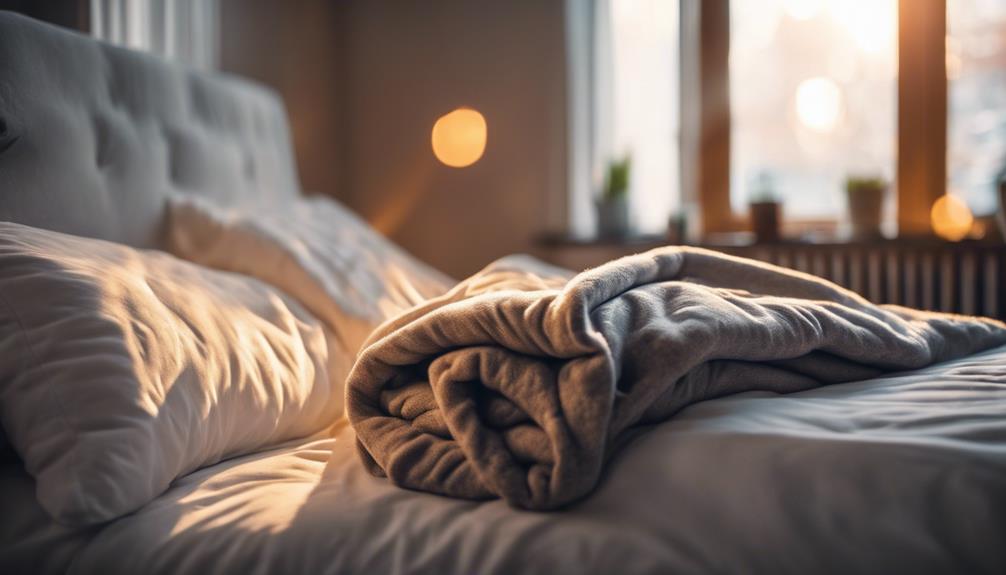
To minimize power consumption when using an electric throw blanket, adjusting the wattage settings to a lower level is a practical and effective strategy. This simple adjustment can significantly reduce energy usage while still providing adequate warmth. Additionally, using a timer to automatically turn off the electric throw blanket when not needed helps prevent unnecessary electricity consumption. Opting for energy-efficient models that consume fewer watts can also make a difference in reducing power usage without compromising comfort. Another tip is to unplug the electric throw blanket when not in use to prevent standby power consumption, which can continue to draw power even when the blanket is turned off. Regularly checking for any damage or frayed wires is essential, as these issues can increase power usage and pose safety risks. By following these tips, you can enjoy the coziness of your electric throw blanket while being mindful of power consumption.
| Tip | Description |
|---|---|
| Lower Wattage Settings | Adjust the settings to reduce power usage. |
| Use a Timer | Automatically turn off the blanket when not in use. |
| Choose Energy-Efficient Models | Opt for models that consume fewer watts. |
| Unplug When Not in Use | Prevent standby power consumption by unplugging the blanket. |
| Regularly Check for Damage | Inspect for frayed wires or damage that may increase power usage and pose safety risks. |
Frequently Asked Questions
Do Electric Throws Use a Lot of Electricity?
Electric throws are an energy-efficient heating option as they consume minimal electricity. They typically use 60-100 watts, with larger dual blankets reaching up to 200 watts for broader coverage. Lower settings can further decrease energy usage. Compared to space heaters, electric throws provide more localized warmth and offer timer features to help manage energy consumption.
This makes them a cost-effective and environmentally friendly choice for staying warm during colder months.
How Many Watts Is a Electric Throw Blanket?
Electric throw blankets typically use 60 to 100 watts depending on size. Smaller blankets may consume around 60 watts, while larger ones can use up to 100 watts.
They're energy-efficient compared to space heaters. Some models have timers for automatic shutoff. Knowing the wattage helps estimate energy costs.
How Much Power Does an Electric Throw Rug Use?
We can share that an electric throw rug typically uses around 60 to 100 watts of power, depending on the size and model. Dual electric throw rugs may consume up to 100 watts each, while larger sizes like queen or king throw rugs can use up to 200 watts.
Compared to space heaters, electric throw rugs are energy-efficient. It's a smart choice to use electric throw rugs with timers to help save on energy costs.
How Long Will a Jackery 500 Run an Electric Blanket?
We can run an electric blanket with a Jackery 500 for about 2-3 hours on high settings, 4-5 hours on medium settings, and 6-8 hours on low settings.
The runtime is calculated by dividing the capacity of 500Wh by 0.85 and then dividing it by the operating wattage of the electric blanket.
Jackery 500 offers a reliable portable power solution for efficiently using electric blankets off the grid.
Can I Use an Electric Throw Blanket While Knitting a Throw Blanket?
Yes, you can use an electric throw blanket while knitting a throw blanket. It provides warmth and comfort without restricting your movement. Just make sure to gauge the skein requirements for throw blanket and not overheat yourself while working on your project.
Conclusion
To sum up, the wattage of an electric throw blanket varies depending on the size and model, typically ranging from 50 to 200 watts.
By understanding the factors that influence wattage consumption and calculating energy costs, one can effectively manage their electricity usage.
Remember, finding the best wattage for efficient heating is key to saving energy and money.
So, choose wisely and stay warm without burning a hole in your pocket!
